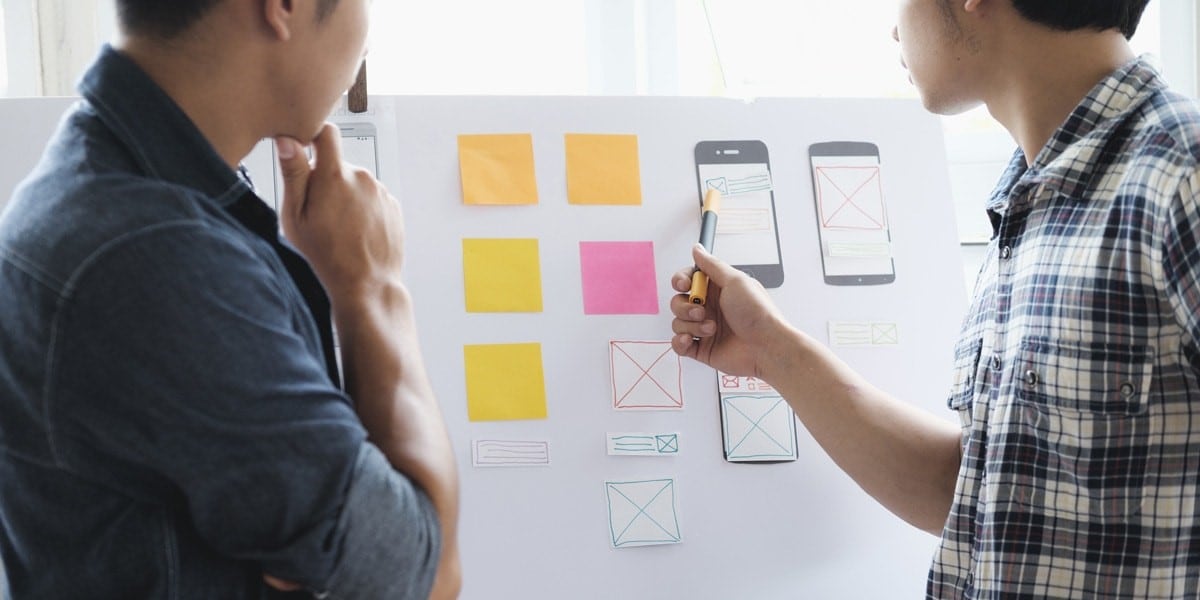The Ultimate Guide to Onsite Design Challenges

The most common round of on-site interviews is whiteboard design challenges. Companies like Google had four whiteboard challenges on the day of the on-site interview that can slow your thinking process and keep you hooked for the rest of the day. It is imperative to have a strategy, a plan for facing the challenge, and a structure to help you think on your feet. As extempore as it sounds, whiteboard challenges are best tackled when you have a game plan.
The whiteboard challenge usually appears in the last round of UX Designer interviews, which is the onsite stage. The interviewer will draw up a question related to product design that the interviewer will not know in advance, and ask him to quickly ideate and draw a solution within 30 to 60 minutes while explaining his own thinking process.
When the interviewer draws a picture, the interviewer usually plays different roles such as Design Director/Product Manager/Stakeholder/User depending on the situation, interacting with the interviewer at any time, answering his questions, or putting forward ideas about his design.
This draws a parallel to how some of the best improvisation musicians or stand-up comedians did it not magically but through sheer rigorous practice. The whiteboard design challenge is becoming increasingly popular as a way of evaluating a designer by an interviewer. This is one of the best ways to see the thinking process of designers, to see how they approach a problem. You can learn a lot from a designer by solving their board problem:
- Enthusiasm for problem-solving shows interest in the role
- Confidence in the board shows experience and maturity
- The answer when you criticize a decision will tell you how that person will work with the team
Why is the whiteboard design challenge so important? And what is the interviewer looking for?

In preparing for the whiteboard design challenge, I noticed that I was taking up almost all the space on the board. I drew good solutions but then realized that they had no direction. There was no clear understanding of where my design was going. In short, I was not a team player. The structure is not an important part of a design assignment because design, in fact, is not a structured process, it is rather messy. It is important to understand that you as an interview candidate - are there to show the interviewers your thought process, your ability to design decisions, and to facilitate further exercise for other team members.
From the interviewer's point of view, the challenge for board design is not how many new ideas you come up with or how beautiful your drawings are; It's about how you approach a problem and how a designer works with others. How you work on your board design is how you will work with the team, and this is what the interviewer evaluates. During the assignment, the interviewer looks for the following signs to show that you understand the basic principles of design and what it means to use "design thinking":
1. Are you asking questions to clarify the purpose?
2. Are you targeting users and their context?
3. Are you making educated guesses and asking the right questions?
4. Do you go beyond the UI and think holistically about the whole scenario?
5. Do you understand basic design principles and patterns?
6. Do you mention weaknesses and improvements in your solution?
7. Do you provide ideas outside of the exercise?
8. Do you have any suggestions for user research? road map? or execution?
9. Do you understand the possible technical limitations?
What are some common mistakes you should avoid during a whiteboard design challenge?
Like any other interview question, the practice of creating a whiteboard design will pay off. Understand the solution of a couple of typical problems, discuss your solution, and do not forget to summarize your proposal at the end. By avoiding these 5 common mistakes, you'll be on the right track for your next design challenge.
Don't be sloppy -I remember my first design exercise where I went through all the words and the interface so no one, including me, could read. Sloppiness shows that you are panicking. So be quick, but don't be sloppy, write the whole word, draw straight lines.
Don't stop talking - Another common mistake is drawing silently on the whiteboard without interacting with the interviewer. You may be working alone, but you shouldn't be working in a team like this. So think, ask questions, be interactive.
Don't be defensive - When the interviewer asks a question about your design, they are not trying to select you. The interviewer is just trying to understand your thought process. So listen and iterate based on the feedback. Defend your design only when necessary.
Don't just talk - On the contrary, not to talk, there is also too much talk. While communicating is important, whiteboard design is challenging. So don't just talk and leave with a blank whiteboard. Write down what you talked about, especially decisions that will guide your design.
Don't lose focus - Again, the goal of a design challenge is not to test how many ideas you can bring in. It is important to show that you are familiar with common design methods for everyday design work. So don't have a hundred ideas, don't show any in detail at the end.
Steps approach to a whiteboard design challenge
There is no perfect approach to interviewing design problems; everyone has their own process and personality. However, there is one bad approach, that is, to start painting right away. If this is your approach, I recommend that you try mine and let me know what you think:
1. Ask questions to indicate the problem
2. Ask about users and their context
3. Write down the main stages of the story
4. Draw some important screens
5. Summarize the story, talk about alternatives, improvements, or other use cases.
1. Ask questions to indicate the problem
As with any design project, don't start designing until you understand the problem you're solving. The first step is to ask questions to get more information about the design issue, for example:
- What is the purpose of the design?
- What are some of the details and context of the problem?
- What are the timing, device, or other restrictions?
2. Ask about users and their context
Our job as UX designers is to know about users. So instead of just asking "who are the users?" We should make educated guesses and try to answer these questions instead of just asking them:
- What types of users are there?
- What are some assumptions about their behavior and problems?
- What are the common use cases?
- What benefits should we provide?
3. Write down the main stages of the story
Now that you understand the problem and the users, it is very important to write down the milestones in the story before you start drawing. It will help you focus and guide the design all the way. It's also important to start with just one use case and tell a story, not just paint screens.
4. Draw some important screens
It's time to draw some screens! Once steps 1 through 3 have been prepared, it will be fairly easy to develop a user interface based on common design patterns. Remember:
- Draw your story based on what was mentioned in step 3
- Draw only critical screens in history
- Draw clearly and mark drawings
5. Summarize the story
The user interface is almost done, but there is one more step if you have time: take stock, make any adjustments or improvements, and discuss alternatives or other use cases. You don't need to go into the details of enhancements or alternative use cases; talking about them shows that you understand the importance of criticism and repetition in the design process.
Trust your designer intuition
You have built a killer intuition over the years of design practice - make use of it. It's perfectly acceptable to say "my intuition says" in a challenge and then move on to the design. In the design school, you will be trained to come up with a rationale for each decision and direction. However, this is not possible with a whiteboard design challenge. You always make assumptions when designing. If you trust your intuition and accept that this is a direction to take with an assumption, it will show your interviewers your clarity of thinking.
Assumptions
As designers, we make a lot of assumptions. Over time, we validate them and perform appropriate iterations. This is an important part of our design process. If you point out that we take this into account, you will get noticed. List any assumptions you make on the whiteboard. Some of the assumptions can be validated by comparing them with our primary research source (one of the interviewers). Most of the assumptions would not be checked, and that's fine. When you acknowledge the fact that they are assumptions and that they need to be validated, you seem less biased towards a design.
Conclusion
Design is all about prioritizing and finding compromises, and there is no single right solution to every design problem. The result and details we have shown in this design challenge will depend on the questions you ask and the decisions you make. But hopefully, by demonstrating the process of using these 5 steps, you now have a structured way to solve the board design challenge that will help you showcase all of your amazing design skills in your next interview.

